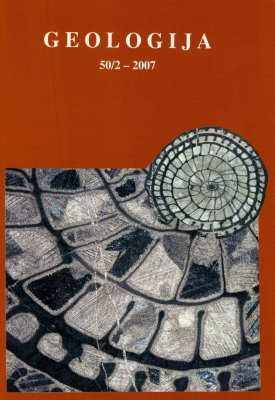Subsidence rate of Ljubljansko barje in Holocene
DOI:
https://doi.org/10.5474/geologija.2007.031Abstract
The article analyses the rate of subsidence of Ljubljansko barje (the Ljubljana marshland) during Holocene. The analysis is based on the reinterpretation of data from pollen diagrams taken in the BV-1 borehole north of Podpeč and in the borehole BV-2 south of Črna vas. The reinterpretation was carried out on the basis of comparison with absolutely dated pollen diagrams in the sediment of Podpeško jezero and diagrams at other locations in Slovenia. The main markers, which the reinterpretation is based on, are the Pinus, the concentration of which starts decreasing at 11.2 ka, and the occurrence of Fagus and Abies. The concentration of Fagus starts rising at 8.7 ka, and Abies reaches its peak at 6.4/6.9 ka and at 3.0 ka. On the basis of relation between age and depth at which the sediment occurs a simple sedimentation-consolidation model was constructed, showing that the neotectonic subsidence of the Ljubljana Moore in Holocene was uniform. The subsidence in the area of borehole BV-1 was 1.24m/ka and the subsidence in the area of borehole BV-2 1.36 m/ka. The article also poses the hypothesis that the transition from younger Pleistocene into Holocene starts in the red-brown cohesive clay representing the paleo-soil and not with the beginning of sedimentation of lake chalk.Downloads
How to Cite
Brenčič, M. (2007). Subsidence rate of Ljubljansko barje in Holocene. Geologija, 50(2), 455–465. https://doi.org/10.5474/geologija.2007.031
Issue
Section
Articles

